Yesterday I reported on some of the processing the D810 does to raw files, apparently in an attempt to reduce noise. A few weeks ago, I published these curves which look at dark-field noise vs shutter speed with the in-camera long exposure noise reduction on and off.
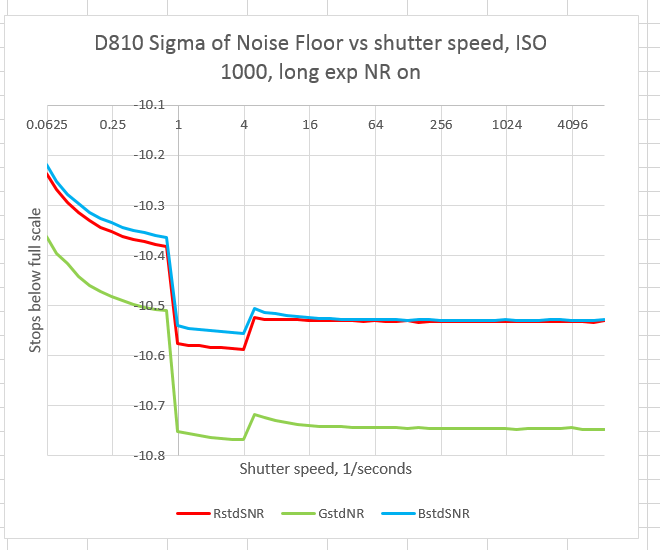

You will note that there is some processing taking place between (inclusively) 1/4 second and 1 second, that looks to be similar whether long exposure noise reduction is turned on or off.
You will also note that the long exposure noise reduction starts at 1.3 seconds, and that its effect is to increase the standard deviation of the dark-field noise, not decrease it, as you’d expect.
Let’s look at the histograms of the 1/5 second image and the 1/4 second one. It doesn’t matter if long exposure noise reduction is turned on or off; they look like this:

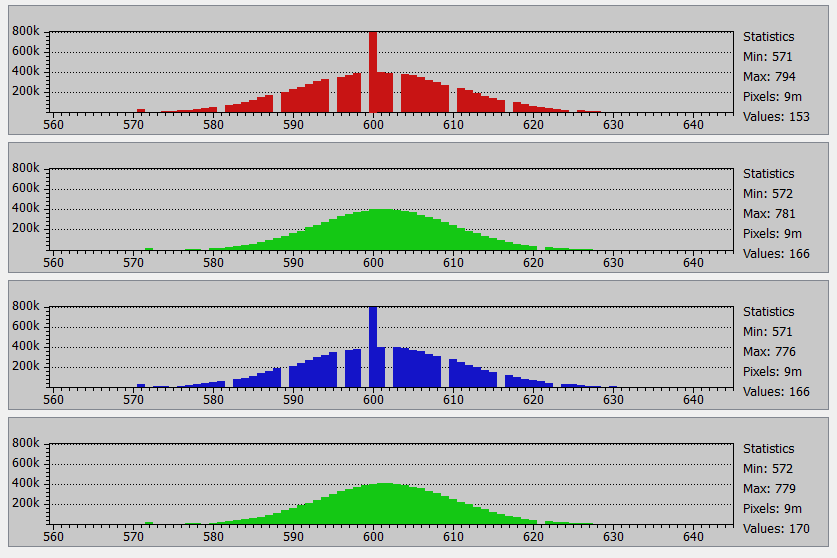
What are the differences? First, there’s that double filled histogram near the black point. That’s obvious, but probably unimportant. The big news is not in the graphical histograms, but in the numbers to their right, particularly the maximum values. The transition from 1/5 to 1/4 second invokes some kind of processing that has the effect of reducing or eliminating outlier pixels.
You’d think that something like that could affect the ability of the image to hold detail, but it doesn’t seem to hurt materially. Here are the spectra of the two images:

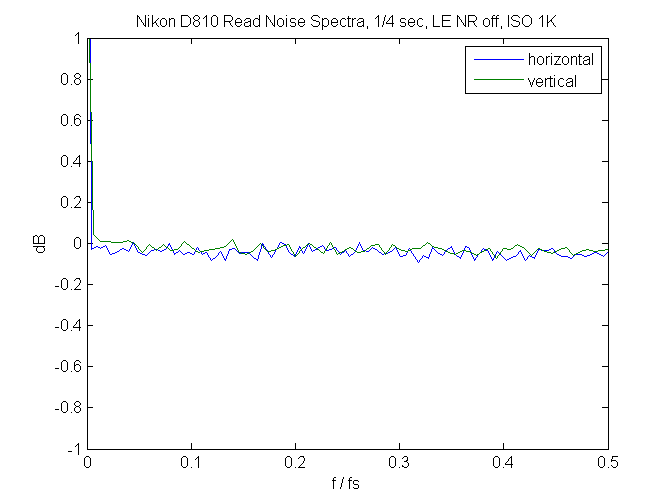
Now let’s look at what’s going on as the shutter speed changes from 1 second to 1.3 second with long exposure noise reduction turned on. Here are the relevant histograms:
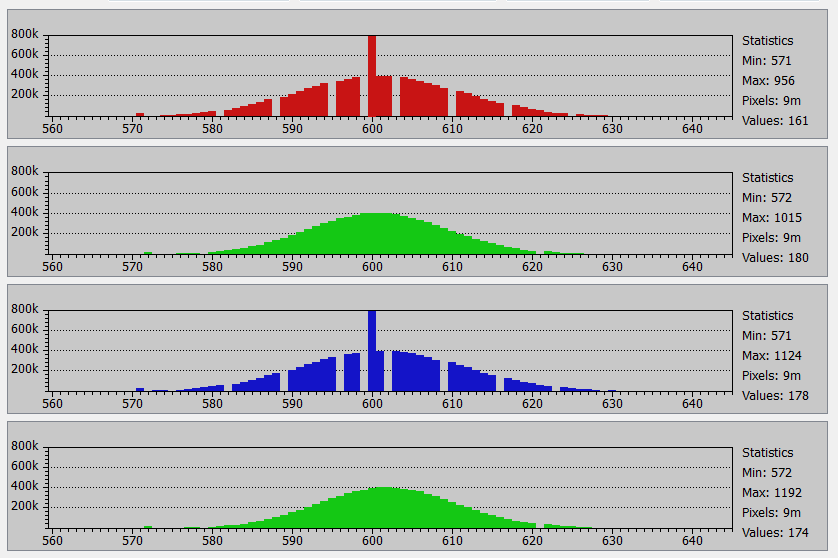
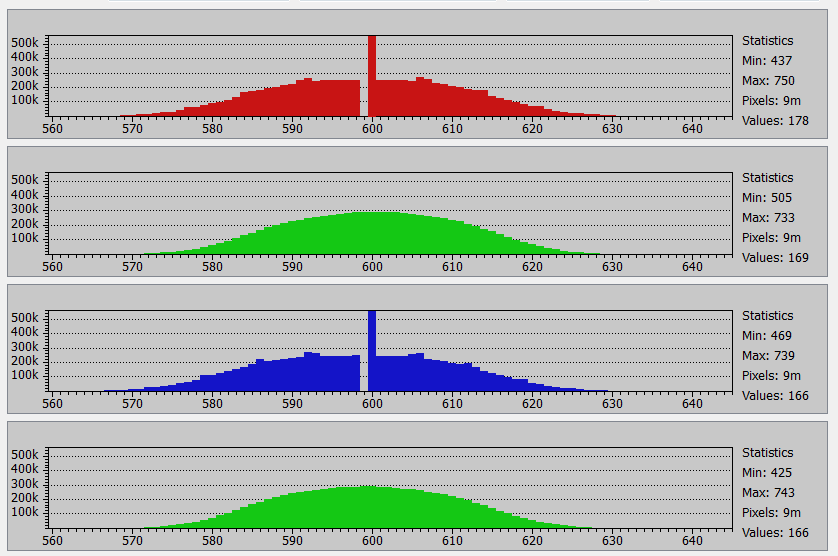
You can see the bulk of the histogram getting broader as the shutter speed gets longer, which is what the graph at the top of this post indicated. But note the maxima: the 1,3 second image has a significantly lower maximum than the 1 second image.
Plotting the maxima rather than the standard deviation across the entire range of shutter speeds tells the story, albeit noisily.
Except for two green channel maxima, long exposure noise reduction substantially reduces the values of the worst case (hot) pixels.
The maximum is not the best measure for hot pixels; the 99th percentile, or even the the 99.9th percentile, would be better. However, Rawdigger doesn’t — yet — give you that information, and I don’t think this is important enough to write a Matlab script to do the job. (If someone wants it done, sing out and I’ll give it a shot.)
Now let’s look at the spectra of those two exposures:
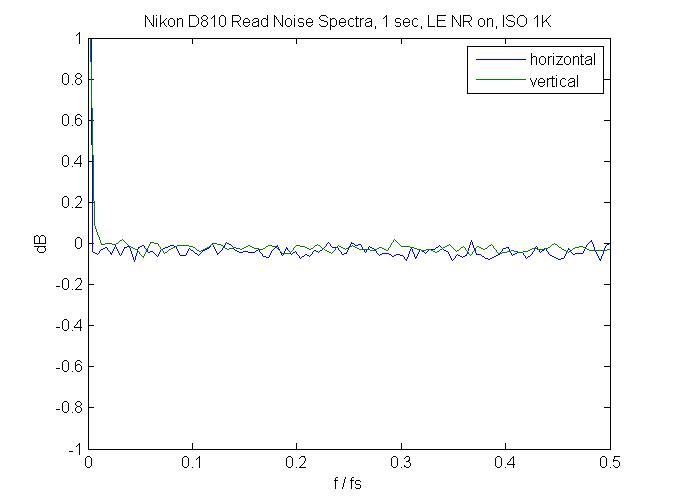

The low pass spatial filtering component of the D810’s long exposure noise reduction appears to be independent of shutter speed, at least in the range between 1.3 seconds and 15 seconds.
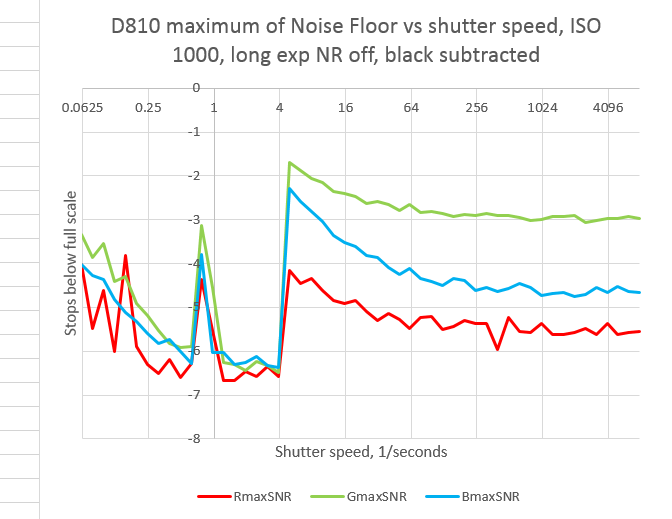
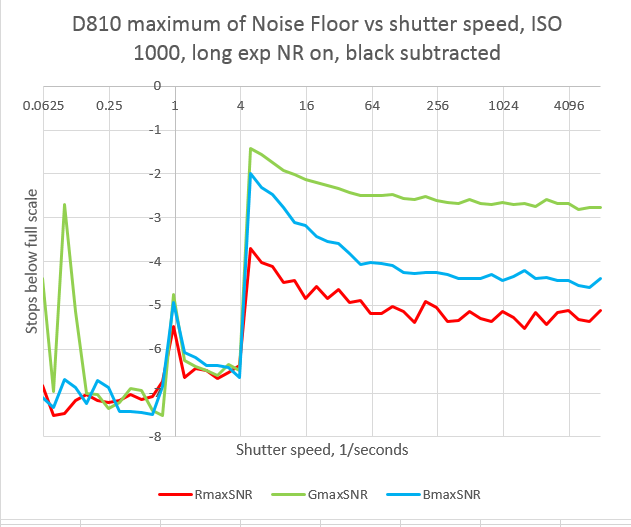
Leave a Reply